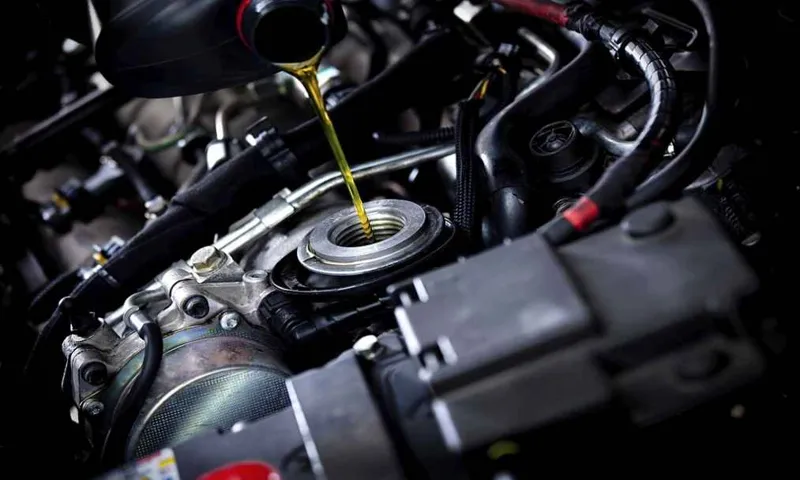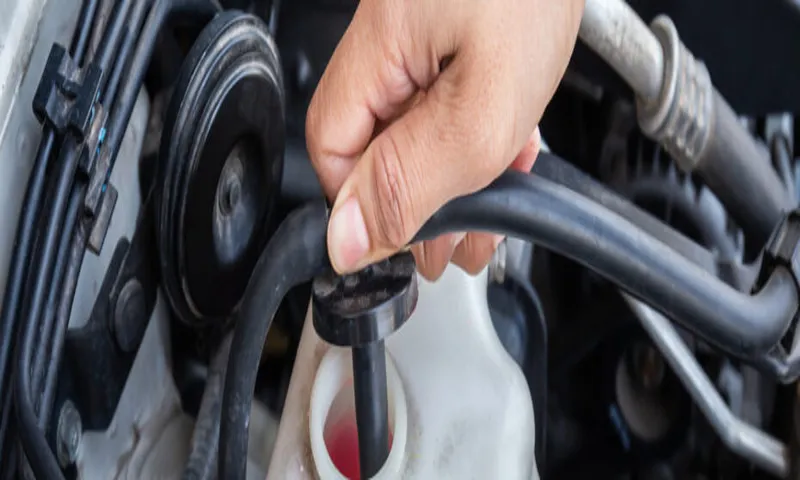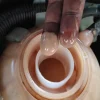Hey there! So, you’ve finally decided to give your car’s radiator a good flush and replace the coolant, but now you’re wondering how to dispose of the old coolant properly. You don’t want to harm the environment, after all. Well, you’ve come to the right place! In this blog post, we’ll explore the best methods for disposing of radiator coolant in a safe and eco-friendly manner.
Radiator coolant, also known as antifreeze, is a vital component of your car’s cooling system. It helps regulate the temperature of the engine and prevents it from overheating. However, over time, coolant can become contaminated with dirt, debris, and other harmful substances.
That’s why it’s important to replace it regularly to maintain the efficiency of your cooling system. But what should you do with the old coolant once you’ve drained it from your radiator? Simply pouring it down the drain or tossing it in the trash is not an option. Coolant contains toxic chemicals, such as ethylene glycol, that can harm the environment and wildlife if not disposed of properly.
So, how can you dispose of radiator coolant responsibly? One option is to take it to a local recycling center or an auto repair shop that accepts hazardous waste. These facilities have the expertise and resources to safely handle and recycle coolant. They can also guide you on how to package and transport the coolant to prevent spills or leaks.
Another alternative is to contact your local municipal waste management department and inquire about their specific guidelines for disposing of hazardous waste. They may have designated drop-off locations or special collection events for coolant and other hazardous materials. Remember, the key here is to ensure that the coolant is recycled or treated by professionals who know how to handle hazardous substances safely.
This way, you can contribute to a cleaner environment and prevent any potential harm to wildlife or water sources. In conclusion, when it comes to disposing of radiator coolant, it’s crucial to do it properly to protect the environment. Avoid pouring it down the drain or throwing it in the trash.
Table of Contents
Section 1: Introduction to Radiator Coolant
When it comes to taking care of your car, one important aspect is knowing how to dispose of radiator coolant properly. Radiator coolant, also known as antifreeze, is a crucial component in keeping your engine cool and preventing it from freezing in cold weather. However, disposing of radiator coolant can be a bit tricky.
It contains hazardous substances, such as ethylene glycol, which can be harmful to the environment if not disposed of correctly. So, what are the proper ways to dispose of radiator coolant? Stay tuned to find out!
Subsection 1.1: What is Radiator Coolant?
Radiator coolant is a vital component of your vehicle’s cooling system, helping to regulate temperature and prevent overheating. But what exactly is radiator coolant? Well, think of it as the lifeblood of your engine, keeping things running smoothly and preventing damage. It’s a specially formulated liquid that is designed to absorb and dissipate heat from the engine, so it doesn’t reach dangerous levels.
Without coolant, your engine would quickly overheat and seize up, resulting in costly repairs or even a total breakdown. So, it’s essential to ensure that you have the right type and level of coolant in your radiator at all times. But what exactly is in radiator coolant? Well, it’s a mixture of water and additives that help to increase its boiling point, reduce corrosion, and prevent freezing in cold temperatures.
These additives may include ethylene glycol or propylene glycol, along with corrosion inhibitors and anti-foaming agents. The coolant circulates through your engine, absorbing heat and then passing through the radiator to release that heat into the air. So, in a way, it’s like your vehicle’s very own internal cooling system, keeping things running smoothly and preventing any overheating issues.

Subsection 1.2: Importance of Proper Disposal
proper disposal Proper disposal of radiator coolant is of utmost importance for the environment and our health. When it comes to disposing of old coolant, you can’t just pour it down the drain or throw it in the trash. Coolant contains harmful chemicals such as ethylene glycol, which can be toxic to humans and animals.
If not properly disposed of, these chemicals can find their way into groundwater, rivers, and lakes, causing pollution and potential harm to aquatic life. Additionally, coolant can be flammable, posing a fire hazard if not disposed of correctly. Therefore, it is crucial to follow the proper guidelines for disposing of coolant.
This typically involves taking it to a recycling or disposal center where it can be handled safely and disposed of in an environmentally friendly manner. By doing so, you can help protect our water sources and prevent harm to ourselves and the ecosystem.
Section 2: Steps for Safe Disposal of Radiator Coolant
When it comes to the disposal of radiator coolant, it’s important to handle it carefully to protect both our health and the environment. The first step is to determine the type of coolant you are dealing with. Some coolants are classified as hazardous waste and require special attention.
If you are unsure, it’s always best to consult with a professional or your local waste management authority. Once you know what kind of coolant you have, the next step is to drain it from the radiator. Be sure to use a suitable container to catch the coolant and avoid any spills.
It’s also important to wear gloves and protective clothing to prevent skin contact. Once the coolant is drained, you will need to find out the regulations for disposal in your area. Some regions have specific guidelines for disposing of coolant, such as taking it to a designated facility or recycling center.
It’s crucial to follow these guidelines to ensure proper disposal and prevent any harm to the environment. Remember, radiator coolant contains chemicals that can be harmful if not disposed of correctly, so always prioritize safety and responsibility when handling it.
Subsection 2.1: Step 1 – Drain the Coolant
In order to safely dispose of radiator coolant, it is important to follow a few simple steps. The first step is to drain the coolant from the radiator. This can be done by locating the radiator drain valve, which is typically located at the bottom of the radiator.
Once the valve is found, a container should be placed underneath to catch the coolant as it drains out. It’s important to wear gloves and eye protection during this process to protect against any potential splashing. Once the valve is opened, the coolant will begin to flow out.
It’s important to be patient and allow all of the coolant to drain out completely. Once the coolant has been drained, it should be stored in a suitable container for disposal. It’s important to never pour radiator coolant down the drain or onto the ground, as it can contaminate water sources and harm the environment.
By following these steps, you can safely dispose of radiator coolant and help protect the planet.
Subsection 2.2: Step 2 – Store the Coolant Properly
coolant storage, safe disposal of coolant, storing coolant properly, coolant disposal guidelines
Subsection 2.3: Step 3 – Find a Recycling Center
One crucial step in the safe disposal of radiator coolant is finding a recycling center. This ensures that the coolant doesn’t end up polluting the environment or causing harm to animals and plants. Recycling centers specialize in the proper disposal and treatment of hazardous materials, including radiator coolant.
They have the necessary equipment and expertise to handle these substances safely. When searching for a recycling center, it’s important to consider their reputation and certification. Look for centers that are licensed and regulated by local authorities to ensure that they comply with proper disposal procedures.
Additionally, recycling centers may have specific requirements for accepting coolant, such as packaging or labeling guidelines, so it’s essential to check their guidelines before dropping off the coolant. By finding a recycling center, you can take the necessary step towards responsible disposal and do your part in protecting the environment.
Subsection 2.4: Step 4 – Check Local Regulations
When it comes to disposing of radiator coolant, it’s essential to check the local regulations in your area. Different regions may have specific guidelines and requirements for the proper disposal of coolant, so it’s important to be aware of these rules before taking any further steps. Some areas may have designated disposal sites or recycling centers where you can safely and legally get rid of your coolant.
Others may have restrictions on disposing of coolant in the regular trash or pouring it down drains. By checking the local regulations, you can ensure that you are in compliance with the law and doing your part to protect the environment.
Section 3: Alternatives to Disposal
When it comes to disposing of radiator coolant, it’s important to know that simply pouring it down the drain or throwing it away in the trash is not only harmful to the environment but also potentially illegal. Thankfully, there are alternatives to disposal that are both environmentally friendly and safe. One option is to recycle the coolant.
Many automotive stores and service centers have coolant recycling programs in place. They can properly dispose of or recycle the coolant for you. Another option is to reuse the coolant.
If the coolant is still in good condition and hasn’t been contaminated, it may be possible to reuse it in the same vehicle or in another vehicle that requires the same type of coolant. It’s important to remember, however, that coolant does have a limited lifespan, so it’s always a good idea to regularly check the coolant’s condition and replace it when necessary. By choosing these alternative methods of disposal, we can ensure that radiator coolant is disposed of properly, protecting both our environment and our communities.
Subsection 3.1: Reuse the Coolant
coolant, coolant recycling, recycling options, environmental impact, automotive industry, sustainability, waste reduction. Sub-section 1 discusses the option of reusing coolant as an alternative to disposal.
When it comes to the automotive industry, coolant plays a crucial role in keeping the engine cool and maintaining its performance. However, coolant can become contaminated over time, which prompts many to dispose of it. But is there a more sustainable solution? Recycling coolant is not only environmentally friendly but also cost-effective.
By reusing coolant, the volume of waste generated is significantly reduced, minimizing the environmental impact. Moreover, recycling coolant helps conserve natural resources by preventing the need for the production of new coolant. The process typically involves cleaning and filtering the used coolant to remove impurities and contaminants.
This ensures that the recycled coolant is of high quality and can be used again in the automotive industry. So, instead of disposing of coolant, consider exploring recycling options to contribute to a more sustainable future.
Subsection 3.2: Recycle the Coolant
“Recycle the Coolant: A Sustainable Solution for Disposal Alternatives” When it comes to finding alternatives to disposal, recycling the coolant is a great option to consider. Coolant is commonly used in various industries and mechanical systems to regulate temperatures and prevent overheating. However, disposing of used coolant can pose a challenge, as it contains contaminants that can be harmful to the environment if not handled properly.
Recycling the coolant not only reduces the environmental impact but also promotes a more sustainable approach to managing waste. The process involves treating the used coolant to remove contaminants and restore its quality. This reclaimed coolant can then be reused, reducing the need for the production and disposal of new coolant.
By recycling coolant, we can significantly reduce the amount of waste generated and minimize the impact on our ecosystems. Additionally, it also helps to conserve resources, as the recycled coolant can be used in various applications. So, how does the recycling process work? First, the used coolant is collected and transported to a recycling facility.
Here, it undergoes a series of treatments, such as filtration, distillation, and centrifugation, to remove impurities and contaminants. The resulting reclaimed coolant is then tested to ensure its quality and performance before being reintroduced into the system. By recycling the coolant, we contribute to a more sustainable future by reducing waste, conserving resources, and minimizing environmental pollution.
So, the next time you’re faced with the challenge of disposing of coolant, remember to explore the option of recycling. It’s a simple yet effective way to make a positive impact on the environment and move towards a more sustainable approach to waste management.
Subsection 3.3: Take it to an Automotive Service Station
“automotive service station” When it comes to getting rid of automotive waste, one option you might not have considered is taking it to an automotive service station. These stations have specialized equipment and expertise to handle and dispose of automotive waste in a safe and environmentally friendly manner. Whether you have used motor oil, old car batteries, or other car parts that need to be disposed of, an automotive service station is equipped to handle it.
They know how to handle these materials safely and can ensure that they are disposed of in accordance with regulations. This option not only saves you the hassle of figuring out how to dispose of these materials yourself but also gives you peace of mind knowing that they will be taken care of responsibly. So the next time you have automotive waste to get rid of, consider taking it to an automotive service station and let the experts handle it for you.
Section 4: Conclusion
In conclusion, disposing of radiator coolant is like bidding farewell to an ex-lover – it requires a delicate touch and a dash of cleverness. Just like you wouldn’t want your ex to come back and haunt you, you also don’t want coolant to wreak havoc on the environment. By following the proper steps of containment, reuse, recycling, or seeking professional help, you can ensure that your coolant and its sentimental memories are properly sent off to their next destination.
So, be a responsible coolant dumper and let go of your ex(cess) coolant with the finesse of a silver-tongued diplomat. After all, the world deserves a cleaner and cooler (pun intended) place to behold!”
FAQs
How should I dispose of radiator coolant?
Used radiator coolant should not be disposed of in regular waste or poured down the drain. It is considered hazardous waste, so it should be taken to a designated recycling or disposal facility. Contact your local recycling center or hazardous waste facility for guidance on proper disposal methods.
Can I reuse radiator coolant?
It is generally not recommended to reuse radiator coolant unless it has been properly tested and treated. Over time, coolant can become contaminated with debris, rust, and other impurities that can affect its performance. It is best to follow the manufacturer’s recommendations and replace coolant as needed.
What are the environmental risks of improper radiator coolant disposal?
Improper disposal of radiator coolant can harm the environment. Coolant contains toxic chemicals, such as ethylene glycol, which can contaminate groundwater, soil, and surface water. This can have detrimental effects on aquatic life, vegetation, and overall ecosystem health. Proper disposal helps prevent these environmental risks.
Can I mix different types of radiator coolant?
It is generally not recommended to mix different types of radiator coolant. Coolants can vary in their chemical compositions and additive packages. Mixing incompatible coolants can lead to detrimental effects on cooling system performance, such as reduced efficiency, corrosion, and damage to engine components. Follow the manufacturer’s recommendations for the type of coolant to use in your specific vehicle.
How often should radiator coolant be replaced?
The frequency of coolant replacement can vary depending on factors such as the type of coolant used, driving conditions, and vehicle manufacturer’s recommendations. On average, coolant should be replaced every 2 to 5 years or around 30,000 to 50,000 miles. It is important to consult your vehicle’s owner’s manual or contact a trusted mechanic for guidance on when to replace coolant.
What are the signs of coolant failure?
Signs of coolant failure can include overheating of the engine, leaks or drips under the vehicle, a sweet or unusual smell inside the car, and a low coolant level. If you experience any of these symptoms, it is important to have your cooling system inspected and serviced to prevent potential engine damage.
Can I dispose of old radiator coolant with household chemicals?
No, old radiator coolant should not be disposed of with household chemicals. Improper disposal methods, such as pouring coolant down the drain or mixing it with other household chemicals, can be harmful to the environment and human health. It is best to contact your local recycling or hazardous waste facility to properly dispose of old coolant.



